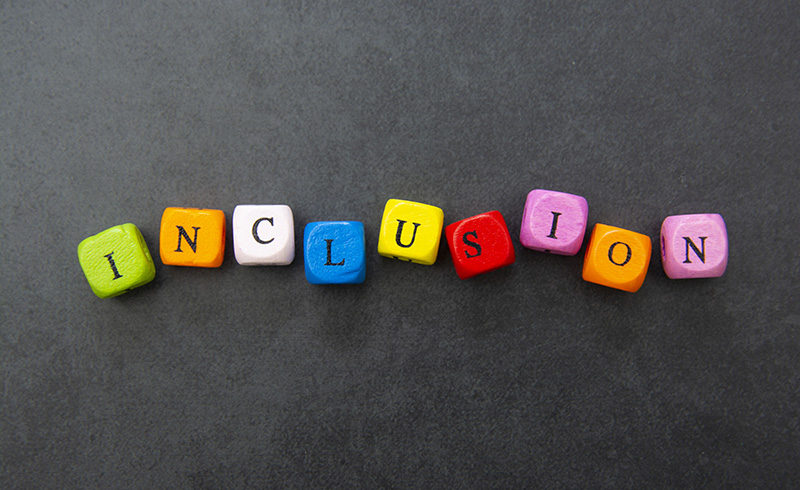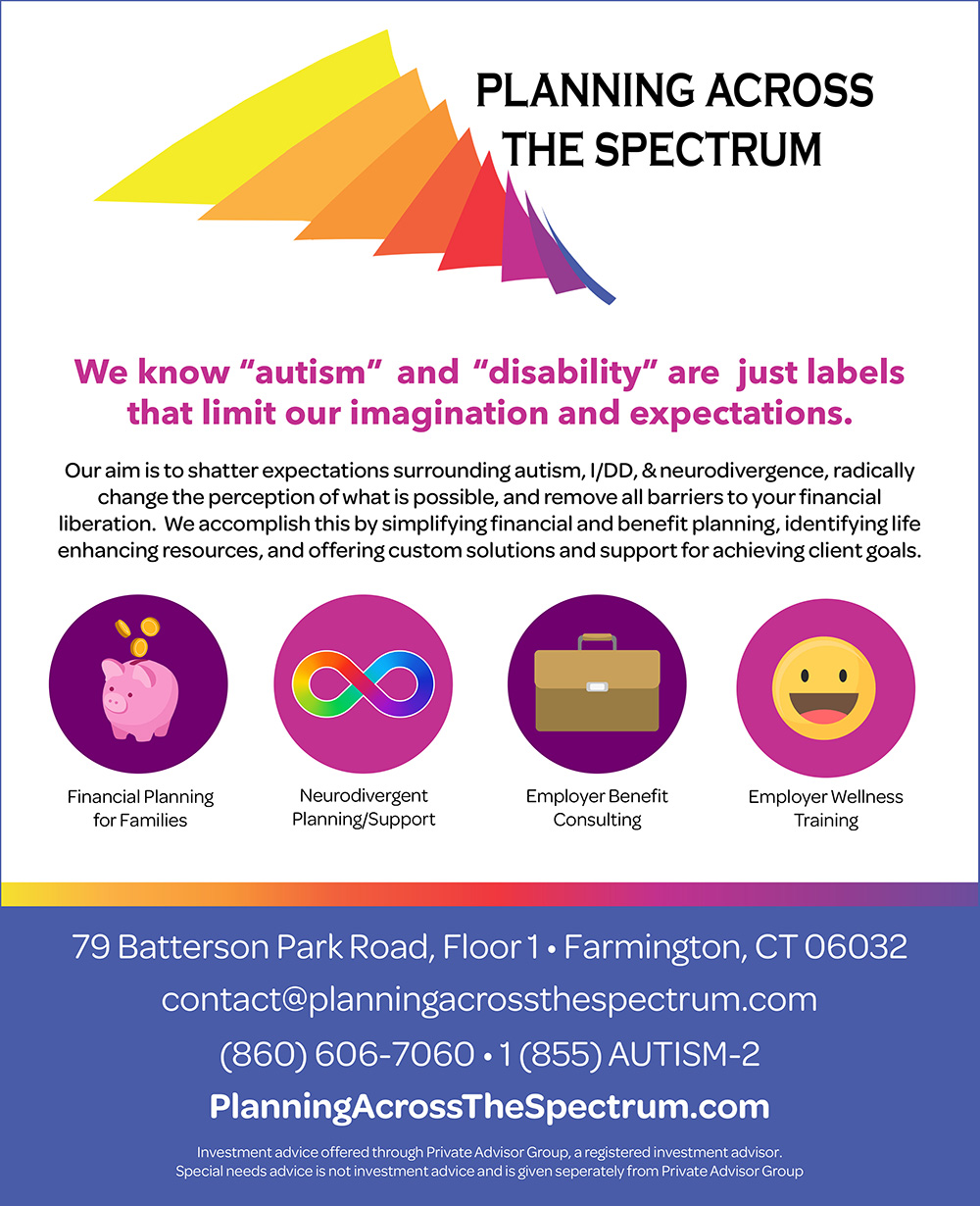As diversity and inclusion initiatives grow in popularity, it is important to consider how they contribute to shaping workplace attitudes. Programs that do not take current developments happening in the communities being serviced into account will come across as outdated at best, and harmful at worst. Such is the case with initiatives concerning autistic employees. Awareness about key issues and accommodations is only the start; true inclusion requires employers and employees to actively make autistic people feel understood and welcome.

One of the ways employers can do this is by listening to autistic perspectives on identity language. Identity language refers to the terminology used to describe a disabled or neurodivergent individual in relation to their diagnosis. On the surface, it may seem like an odd thing to dwell over. “Person with autism” and “autistic person” do not usually come up in everyday work conversations, unless it is in the context of water cooler chatter about someone’s relative.

Jillian Noyes
I would argue, however, that identity language is a valuable lens from which to examine and interrogate workplace attitudes surrounding autism. The way autistic people use identity language to take ownership over their identity – and the way employers and employees may use different language (Kenny et al., 442) – reveals fundamental differences in how autism is perceived. Addressing this disconnect is one way in which autistic people can feel valued, respected, and most importantly, heard by their non-autistic workplace peers.
A Brief History of Identity Language
The history of identity language reveals how societal views of disability inform the way we talk about it. Beginning in the 18th century, identity-first language (“they are autistic”) was used to describe disabled people, including those on the autism spectrum. The placement of these diagnostic terms in relationship to the person reveals their ties to the medical model of disability, which defines individuals by their diagnosis rather than their personhood (Stollznow, 176). Thus, these terms tacitly encouraged the general populace to see disabled people as nothing more than their deficits (Palumbo & Noyes, 2021).
As medical terms like “autistic,” “lame,” and “retarded” devolved into slurs, disability activists put forth person-first language (“they have autism”) as a new way of discussing disability. Their desire to “put the person first” was an explicit rejection of the medical model’s implication that a person is defined by their disability. They further argued that person-first language eliminates stereotypes by forcing the listener and speaker to acknowledge that “disabilities” are labels rather than defining characteristics (Stollznow, 164). This would have the effect of reducing the stigma surrounding autism and other disabilities.
What the activists behind person-first language failed to anticipate was the neurodiversity movement, which frames conditions like autism as naturally occurring variations in brain chemistry (Singer, 64). Many autistic activists argued that their diagnosis impacted their entire perception of self and was an inextricable part of their identity. Identity-first language, they claimed, more accurately reflected this fact (Stollznow, 174-175). They further point out that extricating autism from the person, as person-first language does, implies that autism is a shameful and disordered way of being (Palumbo & Noyes, 2021).
The Implications of Identity Language
Far from being simple labels, identity language is a tool used by autistic people to write their own narratives. For a group that has historically been talked over, infantilized, belittled, and devalued, their ownership of language is an act of defiance. It subverts popular narratives that claim autistic people have minimal agency (much less self-awareness) and forces people to reckon with their own internalized ableism. That is why the identity language debate matters: it upends the status quo and turns societal perceptions of autism on their head.
Unsurprisingly, this linguistic revolution has created a schism between autistic people and non-autistic people (Kenny et al., 447). While many autistic people see the use of identity-first language as subversive and transformative, many others see it as offensive and strange.
When it comes to workplace inclusion initiatives, addressing this dissonance matters. Non-autistic people may have the best of intentions when they use “person with autism,” without realizing how that language implicitly reinforces a workplace culture of othering autistic people (Collier, E935). Some employees’ use of “autistic person” may belie ableist beliefs and perpetuate stigma. Autistic people may react with scorn to workplace materials using person-first language and come to the conclusion that they are not truly valued by their employers. To prevent these kinds of misunderstandings from happening, all team members need to be on the same page regarding not just the use of identity language, but its greater implications.
Employers are in a unique position to accomplish this task. They can leverage the influence they have over employees to counter dominant (and often incorrect) perceptions of autism, all while empowering their autistic employees. The easiest way to do this is to actively include autistic people in curriculum development and to seek their input on complex issues like identity language. Not only will this make inclusion programs more authentic, but it will uplift autistic people and make their voices central to the story being told by these programs.
More importantly, it is the right and ethical thing to do. At the heart of the identity language debate is a desire to be heard, and including autistic perspectives addresses that need.
Identity Language in Action
To create a truly inclusive environment, the preferences of the autistic community should always dictate what is codified in company materials. To that end, identity-first language should be used in inclusion training, with a disclaimer at the start of the training program explaining that some individuals still prefer person-first language and that the discussion surrounding these terms continues to evolve.
Moreover, when dealing with autistic employees directly, it is advised to ask what the individual’s identity language preferences are, much like you would ask for someone’s pronouns. Use of an autistic individual’s identity language preference – whether it is identity-first or person-first – signals that they are cared for on a personal level, and implies a level of mutual respect. They are not just a diversity hire, but a person brimming with potential.
True Inclusivity
By no means should identity language serve as the be-all and end-all by which inclusion programs are judged. Nor does the “proper” use of identity language indicate that a work environment is truly inclusive, or that its inclusion program is working. Employees who take an anti-bias training course may come out of it knowing more about autism and identity language yet continue to exclude their autistic peers from after-work hangouts and small talk at the water cooler (Spoor et al., 8). If a program does not address all the root causes of stigma against autistic people, then it will prove ineffective in creating a legitimately inclusive workplace (Link & Phelan, 381).
To that end, inclusivity cannot just be a superficial corporate initiative. It must also be a personal reckoning with deep-seated biases. That reckoning begins when one steps out of their comfort zone, actively listens to autistic people, and allows their perspectives on identity language and other aspects of the autistic experience to reshape their world. Only when autistic people are embraced as they truly are – not in spite of their autism, but because of it – can true inclusivity and allyship begin.
Jillian Noyes is Director of Digital Content at Planning Across the Spectrum. Jillian is also an autistic filmmaker, editor, writer, and designer based in Connecticut. To learn more about her and her work, please visit jilliannoyesfilm.weebly.com or contact her at noyes.jillian@gmail.com.
References
Collier, R. (2012). Person-first language: what it means to be a “person.” Canadian Medical Association Journal (CMAJ), 184(18), E935–E936. https://doi.org/10.1503/cmaj.109-4322
Kenny, L., Hattersley, C., Molins, B., Buckley, C., Povey, C., & Pellicano, E. (2016). Which terms should be used to describe autism? Perspectives from the UK autism community. Autism : the International Journal of Research and Practice, 20(4), 442-462. DOI: 10.1177/1362361315588200
Link, B., & Phelan, J. (2001). Conceptualizing Stigma. Annual Review of Sociology, 27(1), 363–385. https://doi.org/10.1146/annurev.soc.27.1.363
Palumbo, J., & Noyes, J. (2021, April 28). Navigating identity language as the parent of a child on the autistic spectrum. Thrive Global. https://thriveglobal.com/stories/2146642/.
Singer, J. (1999) ‘Why can’t you be normal for once in your life?’ From ‘a problem with no name’ to the emergence of a new category of difference. In M. Corker and S. French (Eds.), Disability Discourse (pp. 59-67). Open University Press.
Spoor, J. R., Bury, S. M., & Headly, D. (2021). Non-autistic employees’ perspectives on the implementation of an autism employment programme. Autism : the International Journal of Research and Practice,1-12. https://doi.org/10.1177/13623613211012880
Stollznow, K. (2020). That’s Crazy. In On the Offensive: Prejudice in Language Past and Present (pp. 159-195). Cambridge University Press. doi:10.1017/9781108866637.006





